While Memphis rebounded to some extent, it wasn’t enough. After a 33-win showing this season, Marc Gasol has been traded to the Raptors and there’s a chance that Mike Conley will follow him out of town in the not-too-distant future.
The Grizzlies never advanced further than the Western Conference Finals with Conley and Gasol as their centerpieces. With that era coming to an end, new cornerstones Jaren Jackson and – barring a draft-day surprise – Ja Morant will be tasked with helping the organization get back to contention in the coming years.
This year’s draft lottery results altered the outlook of the Grizzlies’ offseason. Halfway through the announcement of those results, we knew that the Lakers had jumped into the top four from No. 11, and it looked like the Grizzlies – who were No. 8 in the lottery standings – might not even have a first-round pick at all, since their top-eight protected first-rounder was owed to the Celtics.
Instead of landing at No. 9 though, that selection moved all the way up to No. 2. Not only do the Grizzlies still have their pick, but they’re now in great position to draft Morant, the Murray State point guard who appears to have emerged as the clear-cut top prospect behind Zion Williamson in the 2019 draft class.
With over a month until draft day, there are still a number of directions the Grizzlies could go with that pick, including trading down or choosing R.J. Barrett over Morant. But early reports suggest they’re “locked in” on Morant, so we’ll assume that’s the case. What happens with Conley now?
Having lost his longtime running mate Gasol earlier this season, Conley seemed resigned to the fact that his time in Memphis would soon be up too, and there are no shortage of possible trade partners for the Grizzlies. The Jazz, Pistons, and Pacers were said to be in the mix for the veteran at the trade deadline, and the Heat and Mavericks are among the other clubs cited as potential suitors.
If the Grizzlies favor a high draft pick, the Heat (No. 13) and Mavericks (No. 15) could be the best matches in that group. On the other hand, if they don’t get an offer to their liking, hanging onto Conley wouldn’t be the worst outcome. He’d be a great mentor for Morant, and Memphis could revisit the trade market before 2020’s deadline.
Based on the success Conley had last season, his stock may never be higher than it is right now, but the Grizzlies shouldn’t simply take whatever they can get for him if the offers this summer are underwhelming.
2. What will the rest of the Grizzlies’ backcourt look like?
Beyond the possibility of drafting Morant and/or trading Conley, there are a number of other uncertainties in the Grizzlies’ backcourt this summer.
The club will have to decide how to handle Avery Bradley‘s contract situation early in the offseason. Bradley is on the books for $12.96MM in 2019/20, but only $2MM of that total is guaranteed up until July 3.
While Bradley struggled to make an impact during his stint with the Clippers, he looked great in 14 games for the Grizzlies last season, averaging 16.1 PPG and 4.0 APG with a .463/.384/.920 shooting line and strong defense. If Memphis thinks he can give the team that sort of production again, guaranteeing his ’19/20 salary looks like the right call — especially since re-signing him after waiving him would be tricky, due to the loss of his Bird rights.
Delon Wright, meanwhile, averaged over 30 minutes per game down the stretch for the Grizzlies after being acquired as part of the Gasol package and will now be eligible for restricted free agency. The 27-year-old would be a solid and versatile backup at the point, but his future may hinge in part on what the club does with Conley and Bradley. If both veterans return, the Grizzlies’ payroll could start to get a bit too close to the tax line for comfort, reducing the team’s ability to make Wright a fair offer based on his market.
3. Will Jonas Valanciunas and Chandler Parsons be back on pricey expiring contracts?
It’s somewhat unfair to group these two players together. In Valanciunas’ case, the question will likely be whether he picks up his $17MM+ player option or signs a longer-term deal with the Grizzlies. Parsons, on the other hand, has his $25MM+ salary locked in already, but doesn’t appear to be part of the club’s future plans and could be traded or waived this summer.
Getting off either player’s salary would help keep team salary in check for the Grizzlies this summer, but I expect the team will do all it can to bring back Valanciunas. He was the most important incoming asset in the Gasol trade and looked great in Memphis, averaging a double-double (19.9 PPG, 10.7 RPG) in just 27.7 minutes per contest (19 games). While he has seven years of experience to Wright’s four, Valanciunas is also just 27 years old and could become a fixture in the Grizzlies’ frontcourt for years to come.
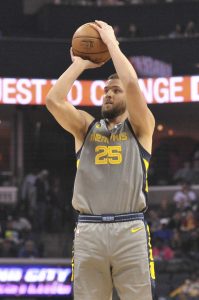 The same probably can’t be said for Parsons, whose time in Memphis has been marred by health issues. Since signing a maximum salary contract in 2016, the veteran forward has appeared in just 95 games for the team, posting the worst per-game stats of his career.
The same probably can’t be said for Parsons, whose time in Memphis has been marred by health issues. Since signing a maximum salary contract in 2016, the veteran forward has appeared in just 95 games for the team, posting the worst per-game stats of his career.
With no pressing need to move Parsons’ salary to clear cap space, I don’t expect the Grizzlies to aggressively try to get out from under the last year of his contract. If absolutely necessary, Memphis could waive-and-stretch him, but doing so would add $8MM+ to the team’s books for two additional seasons, meaning the front office will do all it can to avoid that outcome.
4. Who will be the Grizzlies’ next head coach?
Valanciunas recently told Lithuanian journalist Donatas Urbonas that the Grizzlies’ head coaching hire would have a “big impact” on his free agent decision, so perhaps the team needs to answer this question before addressing JV’s future.
Memphis has taken its time so far with its head coaching search, having parted ways with J.B. Bickerstaff way back on April 11. Virtually every team that has made a coaching change this spring has already wrapped up its search, with the Timberwolves – who just decided this week to open up a search – representing the lone exception.
We also have little sense of which candidates the Grizzlies are considering. Interviews for Warriors assistant Jarron Collins and Jazz assistant Alex Jensen have been reported, but otherwise it appears the club is keeping things close to the vest.
There’s nothing inherently wrong with a team taking over a month to choose a new head coach, or with attempting to keep a lid on which candidates they may be targeting or interviewing. Still, the Grizzlies’ process has been an unusual one by NBA standards, and it will be fascinating to see where it eventually leads them.
5. How will the Grizzlies’ new front office structure work?
In addition to firing Bickerstaff, the Grizzlies re-assigned GM Chris Wallace to the scouting department on April 11. Jason Wexler, Zach Kleiman, and Tayshaun Prince received promotions, with Rich Cho and Glen Grunwald also hired in key management roles.
Presumably, the Grizzlies have a clear idea of how the new front office structure will function, but it’s a little confusing from the outside, as none of the club’s executives hold the title of president of basketball operations or general manager.
Wexler is the Grizzlies’ new president, in charge of overseeing both the business and basketball operations departments. But neither he nor Kleiman, who is expected to assume the day-to-day responsibilities of a general manager, has an extensive basketball background.
Prince holds the role of special advisor, as does Grunwald. Cho was named the vice president of basketball strategy. While they’ll all presumably be involved in basketball decisions to some extent, it’s unclear who will be making the final call on any major moves.
Again, there may be a clear hierarchy in place here, but it will be worth monitoring during the group’s first offseason and subsequent season to get an idea of which voices have the most influence in Memphis’ front office.
Check out the Memphis Grizzlies’ offseason salary cap outlook right here.
Salary information from Basketball Insiders was used in the creation of this post. Photos courtesy of USA Today Sports Images.

 Walker was the subject of trade rumors leading up to the 2018 trade deadline, but the Hornets overhauled their front office shortly thereafter and talk of dealing Kemba died down. He and the team said all the right things, with both sides expressing interest in a long-term union. There’s no reason to think that either side was lying or that that interest doesn’t still exist, but it’s hard to make the case that this remains the right fit.
Walker was the subject of trade rumors leading up to the 2018 trade deadline, but the Hornets overhauled their front office shortly thereafter and talk of dealing Kemba died down. He and the team said all the right things, with both sides expressing interest in a long-term union. There’s no reason to think that either side was lying or that that interest doesn’t still exist, but it’s hard to make the case that this remains the right fit.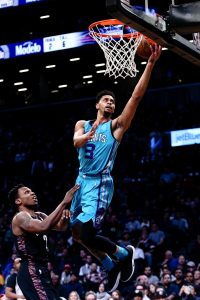
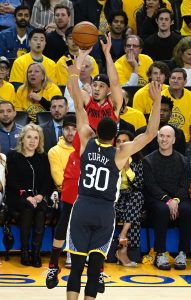 Seth Curry
Seth Curry
 The same probably can’t be said for Parsons, whose time in Memphis has been marred by health issues. Since signing a maximum salary contract in 2016, the veteran forward has appeared in just 95 games for the team, posting the worst per-game stats of his career.
The same probably can’t be said for Parsons, whose time in Memphis has been marred by health issues. Since signing a maximum salary contract in 2016, the veteran forward has appeared in just 95 games for the team, posting the worst per-game stats of his career.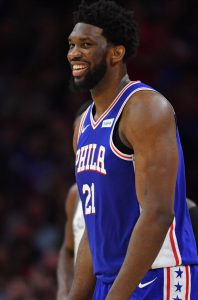
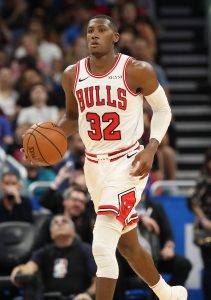
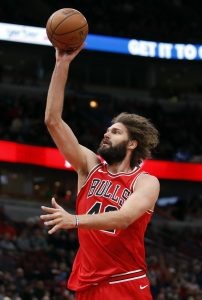 Based on the team’s timeline for contention, it seems like Selden and Arcidiacono are the players more likely to be back, but we shouldn’t entirely rule out a new deal for Lopez. After all, the lottery-bound Bulls could have traded him at the deadline or bought him out before March 1, but opted to keep him around instead. He’s unlikely to earn $14MM+ again, so if the Bulls have some cap room left over, perhaps they’ll explore keeping him in the mix as a veteran leader on a young roster.
Based on the team’s timeline for contention, it seems like Selden and Arcidiacono are the players more likely to be back, but we shouldn’t entirely rule out a new deal for Lopez. After all, the lottery-bound Bulls could have traded him at the deadline or bought him out before March 1, but opted to keep him around instead. He’s unlikely to earn $14MM+ again, so if the Bulls have some cap room left over, perhaps they’ll explore keeping him in the mix as a veteran leader on a young roster.